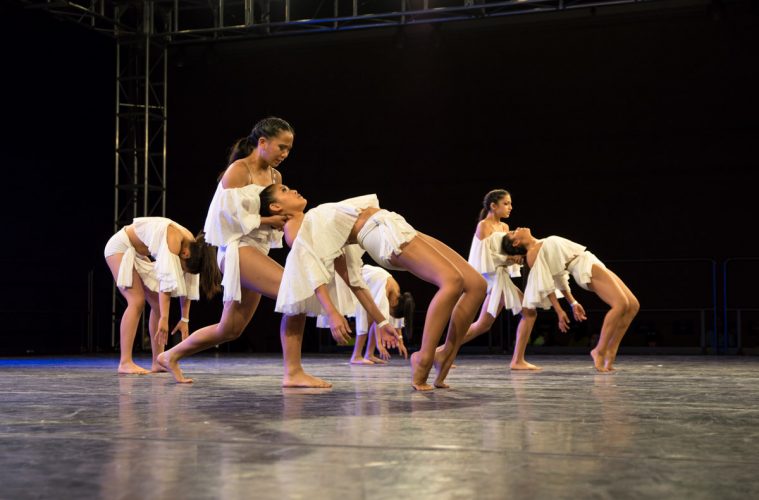You might have found World of Dance by spiraling down a Youtube blackhole, caught a glimpse of an amazing performance on NBC World of Dance, or you might just be a dancer’s family member/significant other who loves dance, but you’re still learning the details (like what are genres?).
Don’t worry, we get it! From the huge range of styles we see on the TV show to the wide variety of hip hop we see at our events, it can be a lot to take in. We’ve created a no-nonsense guide to dance genres to get you up to speed.
Ballet
Ballet is known as the building block of all dance and is characterized by fluid and precise movements done in “turned out” positions. This graceful, meticulous art form is spoken in French and is considered the foundational style of all dance technique. Even though there are different types of ballet (French, Vagonova, etc.), it’s been relatively standardized worldwide.
Jazz
Jazz was once considered any style of dance that could be performed to Jazz music. As dance has evolved with the times, this genre has changed greatly. Jazz has been molded to fit hard hitting or upbeat music and is recognizable by the use of technique with a ballet base.
Tap
Tap is characterized by sharp, musical sounds created by the feet of a dancer wearing shoes with metal plates attached to the heels and toes. Today it seems that Tap dancers are coming out of the woodwork to show off their insane rhythmic capabilities and bringing Tap into the 21st century.
Modern
The initial motif of the Modern dance genre was to break away from the mold of Classical Ballet and focus on freedom of movement and expression. Modern choreography is often created with the intention of telling a story or representing a thought.
Contemporary/Lyrical
Lyrical began as a dance genre that combined Ballet technique and Jazz movement. As dance styles have rapidly progressed and dancers have been exposed to various choreography styles, elements from Jazz, Hip Hop, Lyrical, Ballet and Modern have merged together to form Contemporary. Defined by changes in musicality and emotion driven performances, Contemporary has become the most prominent genre in dance.
Hip Hop/Street/Urban Dance
This dance genre was cultivated outside of dance studios alongside Hip Hop music and culture. Hip Hop spread like wildfire as a result of it being the primary choreographed style for music videos and other commercial appearances. The entertainment aspect of Hip Hop has made it the most popular genre outside of the dance world.
Street Jazz/Jazz Funk
Jazz Funk, now known as Street Jazz, formed by mixing components of Jazz and Hip Hop. Pop and R&B music inspired the groovy, semi-sensual movement used for a lot of today’s commercial work.
Ballroom
Partner work and precise steps are essential to Ballroom dance. Ballroom dances vary among cultures. However, there are a set group of ballroom styles that are competed internationally. Classical and Latin styles are differentiated by the dancers’ speed, steps, and rhythm.
Cultural Dances
Cultures around the world have practiced Folk dances unique to their people since the emergence of dance in human life. These dated traditional dances are beautiful to experience, it almost feels like time travel. The Cultural dance genre is the most important of them all because they symbolize the importance of expression through dance.
“Dancers come and go in the twinkling of an eye but the dance lives on. On many an occasion when I am dancing, I have felt touched by something sacred.In those moments, I felt my spirit soar and become one with everything that exists.”
-Michael Jackson
This year, we are is celebrating a decade of World of Dance with the 2018 World of Dance Championship Week. World of Dance is your destination for exclusive interviews, up-to-date news, and all things dance. Keep up with all the latest news on This Is WOD.




